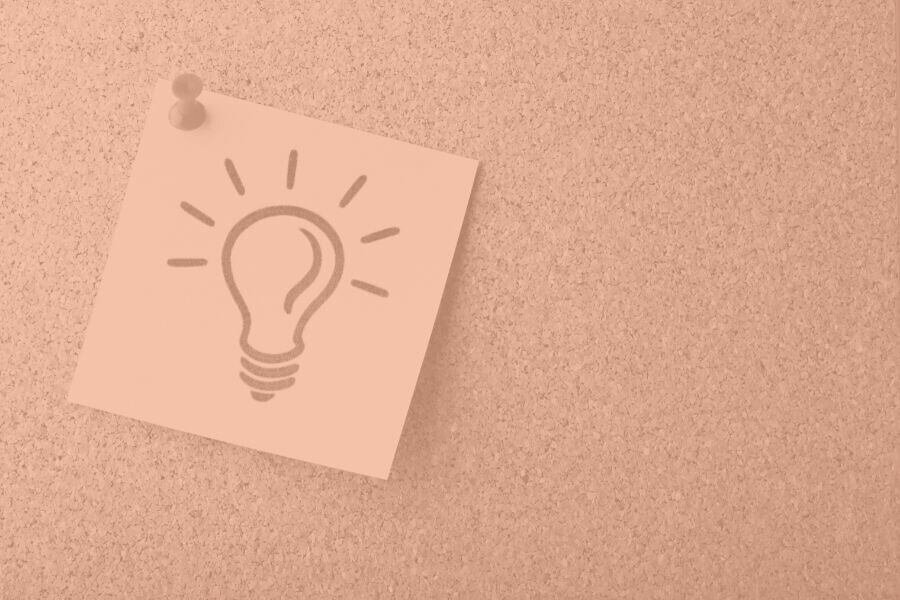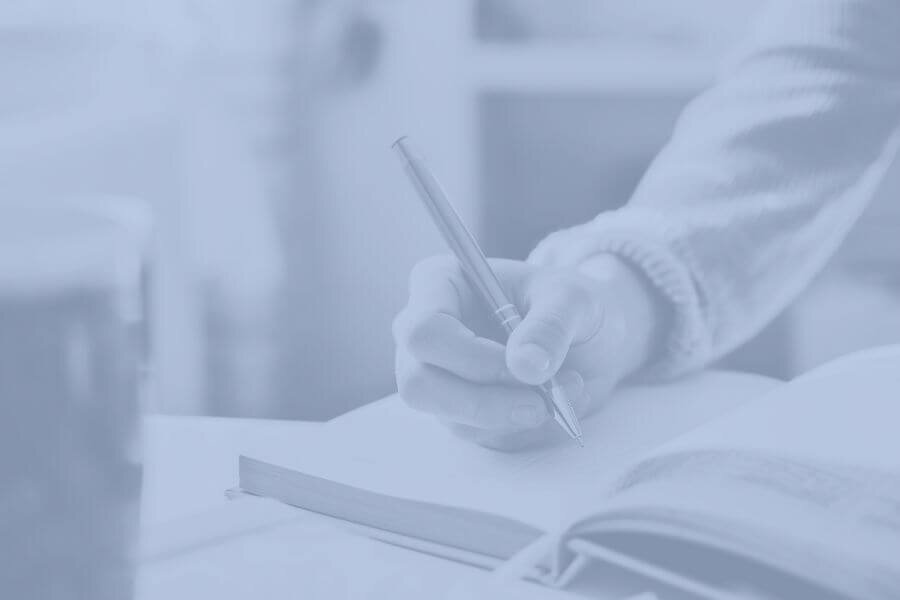Tips and tricks for setting up your creative writing space
Photo by Arnel Hasanovic on Unsplash
I work from home, so it’s important for me to have a space to be both productive and creative.
Our environments have a deep impact on how we feel and write and create. I’d love to share with you some ideas I’ve experimented with over the last few years.
Let’s discuss how we can set up our writing environments to get more calm, clear, and creative.
Have an analog station + a digital station.
I first read this idea in Austin Kleon’s Steal like an Artist.
If you’re like me, you probably spend most of your time writing on a computer. In fact, all of my ideas and stories are hunkered down on my computer.
However, in Kleon’s book, he recommends that creatives have an “analog station.”
He writes:
“For your analog station, keep out anything electronic. Take $10, go to the school supply aisle of your local store, and pick up some paper, pens, and sticky notes. When you get back to your analog station, pretend it’s craft time. Scribble on paper, cut it up, and tape the pieces back together. Stand up while you’re working. Pin things on the walls and look for patterns.”
I loved this idea when I first read it. I thought, “Why don’t I have an analog station?!”
I find working with my hands—and getting my eyes and brain off a screen opens up new, creative ways of looking at the world.
We spend so much of our time writing on our screens.
Why not make space to write and create without any digital distractions?
Now, having two workspaces is only doable if you have the space. If you have a smaller space, consider getting a box of fun “analog” items to play around with if you hit writer’s block.
I like to explore the dollar store for anything with sparkles and pom-poms and paints to get my creative brain going.
Consider—how can can you embrace an analog space?
Try clearing your clutter for calmer creativity.
When I was a kid, my bedroom was the messiest room in the house.
I flung clothes everywhere. I let papers scatter across my desk. There were dubious piles of dubious items everywhere.
The young artist in me was convinced that messy = creative.
So, for a long time, I clung to my “I-make-messes-because-I’m-a-cute-creative!” identity.
Everyone else saw a disorderly bedroom. I saw a room with piles of “innovation.” (😅)
Oh, how times have changed! I've discovered, for me, that a clear desk = clear, calmer creativity.
A couple of years ago, I started clearing the clutter in my life at a time when my emotional life felt chaotic.
When many things were going sideways in my life, I found it immensely comforting to order and tidy my physical surroundings.
Ethan Kross wrote in his book, Chatter:
“Imposing order on our surroundings… can be comforting and allow us to feel better, think more clearly, and perform at higher levels.”
How you can create a sense of “order” in your writing areas?
I definitely need messes to get creative, don’t get me wrong. (Hello, analog station!)
Chaotic schedules allow for serendipitous encounters. Unstructured days can lead us to new people and settings that spark ideas.
But I’ve found my creativity also thrives when I feel calm.
For me, calm is found in clear and “ordered” surroundings.
This is my writing desk (it’s a work-in-progress, but I wanted to share it!):
Here are some ways I keep my writing desk clear and 'calm':
I have a physical inbox on the right side of my desk. This is where papers and receipts go—and I make sure to empty it once a week.
I only keep things around me that “spark joy,” as Marie Kondo would say. This includes my plants!
At the end of every day, I tidy my desk (putting away pens, papers, etc.) to shut down and let go of the day.
Not everyone will thrive with a clear and tidy writing desk. But I encourage you to experiment!
How does writing feel if you’re writing with a clear and tidy desk vs. a clutter of colour?
Do you need a desk that’s clear if you’re editing? Do you need a desk that’s full of fun mess when brainstorming?
Try out different environments to find what helps you write best. Like me, you might be surprised by what you find 🤗
Match your space to your creative activity.
A creative writer needs space for three different activities.
Most days, we write.
Some days, we edit.
Other days, we brainstorm ideas and plan for future writing.
Here's our hat box as creative writers:
🎩 Hat 1: The top hat of the writer
🧢 Hat 2: The cap of the editor
👒 Hat 3: The bonnet of the brainstormer
(Btw—I could only find three emoji hats. So, if you’d never wear a tuxedo-style hat on your writer days, I do apologize.)
Creative writers need space to wear all three hats—in our schedules and in our environments.
What environments are best for writing, editing, or brainstorming?
Your environment has a big impact on your creative life.
No matter if you're writing, editing, or brainstorming, here are some suggestions you can consider trying.
🎩 Tips to create an environment for writing
When you’re writing, try to pick spaces that help you feel calm, creative, and open to more abstract thinking.
Research suggests we’re more at ease with abstract thinking when we feel less restricted. Studies suggest we’re more creative when we sit under ceilings at least 10 feet tall!
Suggestion: Try writing outside! I sometimes write by the ocean near my place.
Or—write near a window, preferably one that brings in a lots of bright, natural light.
Another way to promote abstract thought? Put up pictures of far-off landscapes and open spaces near your writing desk.
If you want to (and can!) paint your walls, try picking a color like green or blue—anything that has a calming effect.
Spend time at your analog desk—away from digital distractions.
🧢 Tips to create an environment for editing
When you’re editing, try to pick spaces that help you focus with ease and more intensity.
If you’re editing your work, try to edit somewhere different than where you write. Editing often requires a fresh perspective—and new scenery helps with that.
Try to edit somewhere with lower ceilings. Research shows that when we’re doing more analytical, focused work, a lower ceiling can help us concentrate.
Light up your editing space with bright light—it’ll help you feel more alert!
On that note, try to edit when you feel at your freshest. Editing often requires more intense focus (especially if you’re fact-checking), so figure out when your brain feels most awake.
For me, that’s first thing in the morning after I’ve had a cup of coffee. I save my most intense edits for those hours.
👒 Tips to create an environment for brainstorming or planning
When you’re brainstorming or planning, give yourself space to daydream.
Try to give your brain space to be unfocused. Ever noticed some of your best ideas come soaring out of the blue—like when you’re washing the dishes?
Behind your cranium, your brain works on unknotting problems—and plans for the future—when you’re not specifically focused on something.
Make time to do something habitual, like walking, without any other distractions. Leave your phone behind and take a pad of paper instead when you want to come up with new ideas.
Try to keep a pad of paper with your “unsolved” creative problems. Sometimes we need to let plot or pain points simmer in our brain before we can come up with an answer.
Look them over before going to sleep and let your brain twist and turn in some solutions.
This style of daydreaming is sometimes called "scatterfocus." If you’re interested in learning more about our “scatterfocus” mode, I highly recommend Chris Bailey’s book, HyperFocus.
Create space to write and rest without digital distractions.
“Solitude requires you to move past reacting to information created by other people and focus instead on your own thoughts and experiences—wherever you happen to be.” - Cal Newport
I’m an easily distractible writer. (My favourite way to procrastinate writing? Reconciling my budget 😂)
We all have things that can pull our attention away from our work.
And from our own thoughts and experiences.
For me, I’m working on creating an environment where I can write and live—and rest—with less digital distractions.
Here are the two experiments I’ve been tinkering with to make this a reality.
1️⃣ Write without your phone in sight.
In my apartment, I have a “charging” table for my electronics.
And I purposely chose an out-of-sight, dark corner in the recesses of my apartment for this table.
I never write with my phone nearby. And on my writing mornings, my phone will only ring if my mom, dad, or sister is calling me. (Family can always interrupt me. 💛)
Try this: Write without your phone in sight this week. And use the 15-second rule.
The 15-second rule: Put 15 seconds between yourself and a distraction.
Put your phone in a box in your closet that has a combination lock.
Or put your phone underneath a pile of items (gently, of course).
Or put your phone in a locked drawer and give the key to someone else.
15 seconds is usually enough time to dissuade you from reaching for a distraction.
Where can you put your phone so it will take you at least 15 seconds to retrieve it? Try putting it there when you want to get into a creative zone.
2️⃣ Make time for 15 minutes of stillness in your day—away from screens.
Being alone in my apartment has left me a lot of time to feel bored.
And that was hard for the first few weeks. (It’s still hard, frankly.)
When my phone is close to me, I never have to feel bored. There’s always something to entertain me.
But there is a lot of research that boredom leads to creativity.
I’ve been committing to sitting on my couch for 15 minutes every night—and doing absolutely nothing. (Exciting, eh!)
I sit and stare out the window. I let my mind wander.
I don’t turn on any screens. I keep all iPad, eReaders, and smartphones far, far from me.
Sometimes I do feel bored. But most of the time—this "nothing" space helps me relax.
I feel calmer.
And I usually have noodles of ideas come to me.
I invite you to consider: where can you create space to steer clear of screens—and just do nothing?
It will likely feel uncomfortable. But discomfort is often where our creative growth lies 🌻
Our environments have a huge impact on our creativity.
It helps to notice when we’re at our most creative. What environments do you need to feel at our most productive as a writer?
Your answers may be different from mine. As always, take what you like and leave the rest.
And focus on experimenting! You’ll likely discover some surprising ways to set up your environment—try to stay open to new possibilities :)
Enjoyed this article?
Get “The Sunday Spark,” a newsletter designed to help you meet your writing goals ✨
Every month, I’ll send you a letter with uplifting, actionable ideas to help you feel creatively energized as a writer.
Sign up, and you’ll immediately get my free workbook, A 3-Step Checklist to Set up a Sustainable Writing Schedule ✏️
Oh hey there, I’m Monika!
(she/her) I’m a big fan of compassionate creativity, intentional living, and freshly-popped popcorn. I hope this article gave you some ideas for setting up your creative writing space.
If you have any questions, feel free to send me an email. I love to hear from fellow writers!














